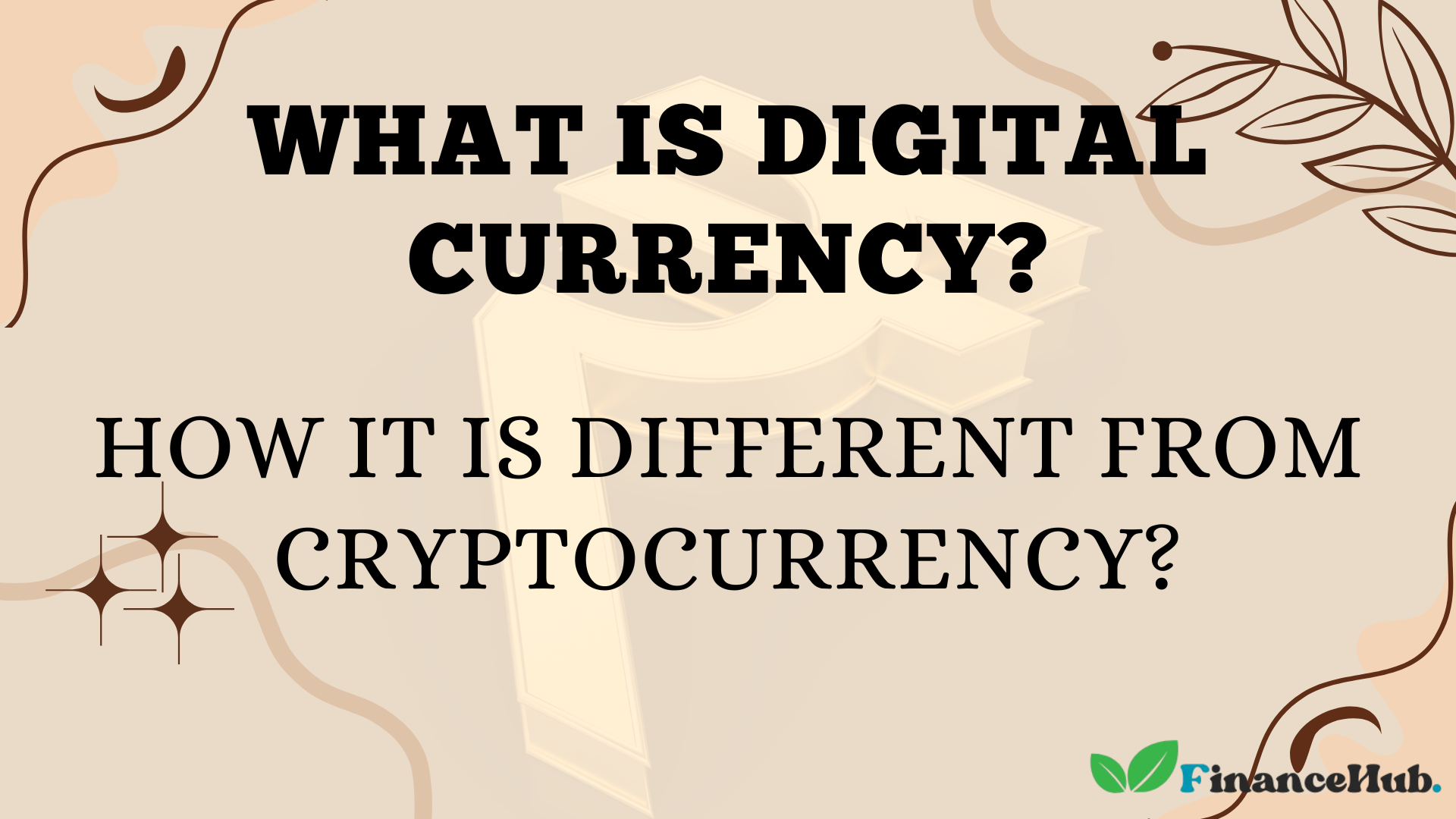Digital Currency vs. Cryptocurrency: Understanding the Differences
Digital currency and cryptocurrency are often used interchangeably, but they are not the same. Both exist in electronic form, but their underlying systems, control mechanisms, and purposes differ significantly. This article explores what digital currency is, how it compares to cryptocurrency, and why the distinction matters in today’s financial landscape.
What is Digital Currency?
Digital currency refers to any form of money that exists purely in digital or electronic form. Unlike physical cash, it has no tangible counterpart and is stored, transferred, and managed electronically. Digital currencies can be issued by central banks, governments, or private financial institutions.
One of the most common types is Central Bank Digital Currency (CBDC), which is a government-backed digital version of a country’s fiat currency. Examples include China’s Digital Yuan and Nigeria’s e-Naira. These are designed to function like traditional money but with faster and more secure digital transactions.
Another form is digital fiat currency, which includes the electronic money held in bank accounts or digital wallets like PayPal, Venmo, or mobile banking apps. These are still part of the traditional banking system, just without physical cash.
Stablecoins, such as USDT (Tether) and USDC, are also a type of digital currency, but they are pegged to real-world assets like the US dollar to maintain stability.
Key Features of Digital Currency
- Centralized Control – Digital currencies are managed by central authorities like governments or banks.
- Regulated – They follow strict financial laws, including anti-money laundering (AML) and know-your-customer (KYC) rules.
- Stable Value – Since most are tied to fiat currencies, their value remains relatively stable.
- Fast Transactions – Digital payments are quicker than traditional banking methods.
What is Cryptocurrency?
Cryptocurrency is a type of digital currency, but it operates very differently. Instead of being controlled by a central authority, cryptocurrencies run on decentralized blockchain networks. Bitcoin (BTC), the first and most well-known cryptocurrency, was created in 2009 as an alternative to traditional money.
Unlike digital currencies, cryptocurrencies are not issued by governments. Instead, they rely on cryptographic techniques to secure transactions and control the creation of new units. Ethereum (ETH), Solana (SOL), and Ripple (XRP) are other popular examples.
Key Features of Cryptocurrency
- Decentralization – No single entity (like a bank or government) controls the network.
- Blockchain Technology – Transactions are recorded on a public, tamper-proof ledger.
- Pseudonymity – Users can transact without revealing real identities (though not fully anonymous).
- Volatility – Prices can fluctuate wildly, unlike stable digital currencies.
- Global Access – Anyone with internet access can use cryptocurrencies, bypassing traditional banks.
How Digital Currency Differs from Cryptocurrency
1. Centralization vs. Decentralization
The biggest difference is control. Digital currencies are centralized, meaning banks or governments oversee them. Cryptocurrencies, on the other hand, operate on decentralized networks where no single authority has full control.
2. Regulation & Compliance
Digital currencies follow strict financial regulations. Banks verify users’ identities, and transactions can be monitored. Cryptocurrencies, however, often operate outside traditional regulations, though some governments are now imposing rules.
3. Technology Used
Digital currencies rely on conventional banking systems or private databases. Cryptocurrencies use blockchain, a distributed ledger that ensures transparency and security.
4. Stability & Value
Most digital currencies (like CBDCs or stablecoins) are pegged to fiat money, keeping their value stable. Cryptocurrencies, however, are highly volatile—Bitcoin’s price can swing dramatically in a single day.
5. Transaction Speed & Cost
Digital currency transactions (like bank transfers or PayPal) are fast but may involve fees. Cryptocurrency speeds vary—Bitcoin can be slow, while others like Solana process thousands of transactions per second. Fees also differ based on network congestion.
6. Privacy & Anonymity
Digital currencies require identity verification (KYC). Cryptocurrencies offer more privacy, though not complete anonymity—transactions are recorded on the blockchain, and wallets can sometimes be traced.
Use Cases: Where Each Excels
Digital Currency Use Cases
- Everyday Payments – Buying groceries, paying bills, or sending money digitally.
- Government Benefits – Direct distribution of welfare or stimulus funds via CBDCs.
- Banking Services – Instant transfers, online purchases, and digital payroll.
Cryptocurrency Use Cases
- Decentralized Finance (DeFi) – Lending, borrowing, and earning interest without banks.
- Cross-Border Payments – Faster and cheaper international transfers than traditional banking.
- Smart Contracts – Self-executing agreements (e.g., Ethereum’s blockchain).
- Investment & Trading – Many buys crypto as a speculative asset or hedge against inflation.
Advantages & Disadvantages
Digital Currency Pros & Cons
✅ Pros:
- Stable value (pegged to fiat).
- Fast and secure digital payments.
- Backed by trusted institutions.
❌ Cons:
- Centralized control means less privacy.
- Dependent on banking infrastructure.
- Susceptible to government restrictions.
Cryptocurrency Pros & Cons
✅ Pros:
- No central authority (censorship-resistant).
- Global access (bankless transactions).
- Potential for high returns (though risky).
❌ Cons:
- Extreme price volatility.
- Regulatory uncertainty in many countries.
- Risk of scams, hacks, and lost funds.
The Future of Digital Money
Governments worldwide are exploring CBDCs to modernize financial systems. Meanwhile, cryptocurrencies continue evolving, with innovations like Bitcoin ETFs and institutional adoption growing. Some experts believe both will coexist—CBDCs for everyday transactions and crypto for decentralized applications.
Final Thoughts
While digital currencies and cryptocurrencies both exist electronically, they serve different purposes. Digital currencies offer stability and government backing, while cryptocurrencies provide decentralization and financial freedom. Understanding these differences helps users choose the right option for their needs—whether it’s secure digital payments or decentralized investing.
As technology advances, the line between these two may blur, but for now, their distinct features shape how we interact with money in the digital age.

Sekhar Gour is the creator of Finance Hub Assam. A finance enthusiast with a knack for simplifying complex money matters, Sekhar offers practical insights tailored to Assam’s economic scene. When not writing, he enjoys exploring local culture and market trends.

